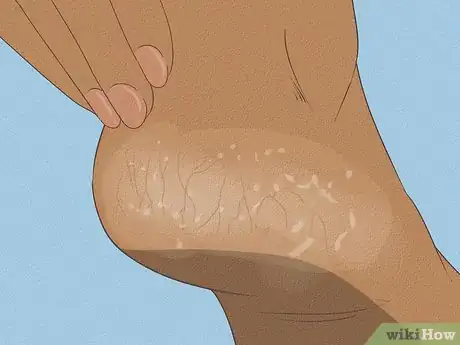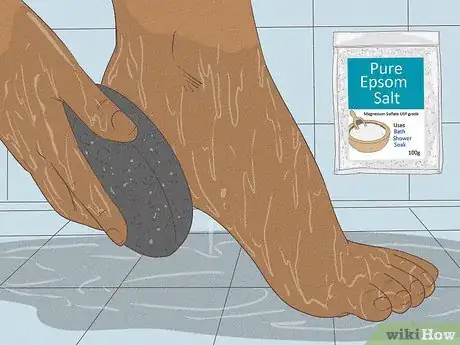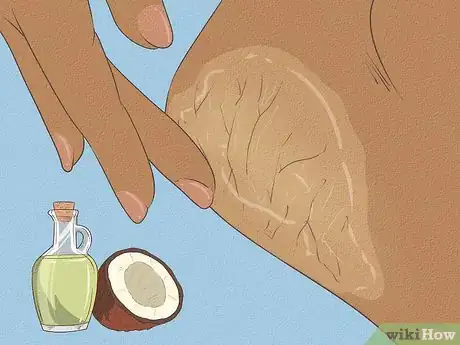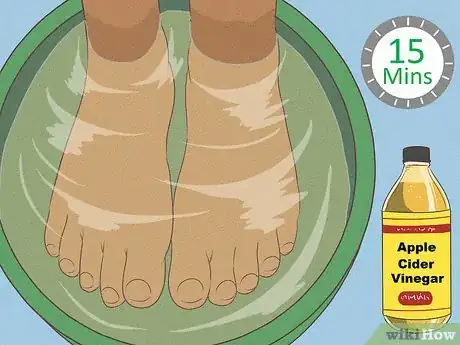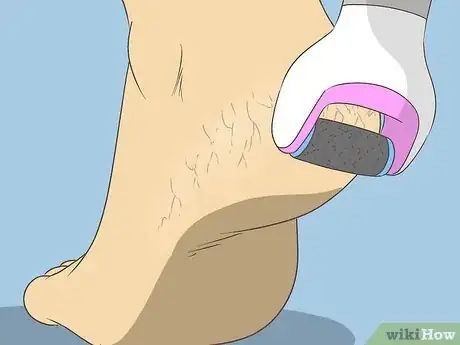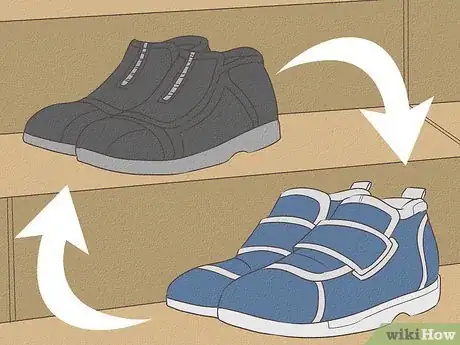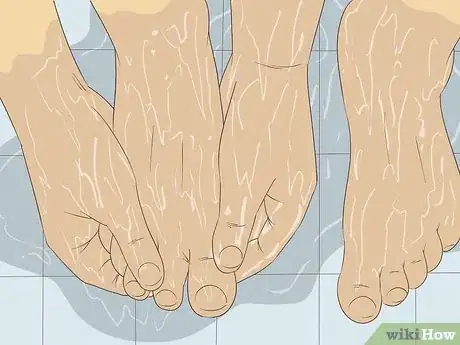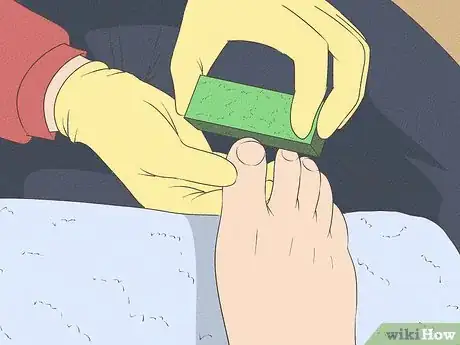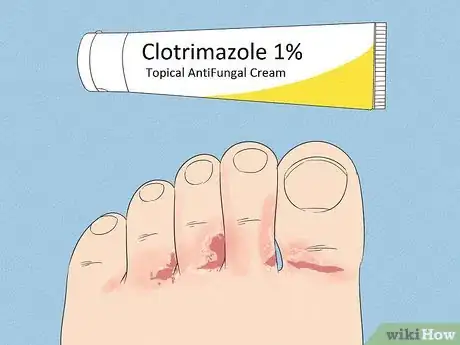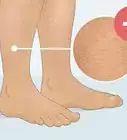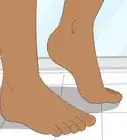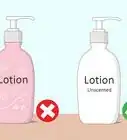This article was co-authored by Catherine Cheung, DPM. Dr. Catherine Cheung is a board certified Podiatrist based in San Francisco, California. Dr. Cheung specializes in all aspects of foot and ankle care, including complex reconstruction. Dr. Cheung is affiliated with the Brown & Toland Physicians and the Sutter Medical Network. She earned a DPM from the California College of Podiatric Medicine, completed her residency at the Encino Tarzana Medical Center, and completed a fellowship at the Kaiser Permanente San Francisco Medical Center. She is board certified by the American Board of Podiatric Surgery.
This article has been viewed 83,859 times.
If your feet have been feeling rough and dry, you're probably wondering how you'll ever get them back to feeling soft and smooth. Dry skin on your feet can be caused by a lot of factors, including age, genetics, living in a dry, cold climate, standing barefoot for long periods of time, ill fitting shoes, or a medical condition like Athlete’s foot.[1] X Research source Luckily, healing the dry skin on your feet might just be easier than you think. Check out our list of some of the most effective treatments!
Steps
Exfoliate with a DIY sugar scrub.
-
Sugar scrubs help remove dry skin and soften hard or cracked skin. You can make a basic sugar scrub by combining brown or white sugar with a small amount of olive oil and an oil extract. You can also add essential oils to the mixture if you want so your feet end up soft and smelling good.
- To make a sugar scrub, combine 2/3 cup granulated white sugar, 1/3 cup packed brown sugar, and 1/2 cup olive oil in a mason jar. You can also add one tablespoon vanilla extract to give the scrub a vanilla scent.
- You can make a soothing peppermint foot scrub by combining 1 cup of Epsom salt, 1/4 cup olive oil or almond oil, and 10-15 drops of peppermint essential oil in a mason jar.[2] X Research source
Use a pumice stone after a shower or bath.
-
Buffing your feet with a pumice stone can leave them feeling smooth. Pumice stones are made of volcanic rock. They're really useful for removing dead skin from tougher areas of your body, including your feet. Run a warm bath and add a small amount of Epsom salt to the water. Let your feet soak for several minutes and then rub them with a pumice stone. The water epsom salt bath will help to loosen up the dead skin, making it easier to remove.[3] X Research source
- Follow this foot scrubbing routine every night or several times a week. Using a pumice stone on a consistent basis will also allow any foot moisturizers you are using to penetrate your skin and soften hard or cracked skin on your feet.
Massage coconut oil or olive oil into your feet each night.
-
These all-natural moisturizers will sooth and soften your feet. Apply a generous layer of coconut oil or olive oil to your feet at night before bed and then wear socks to seal in the moisture and to keep your feet from drying out in the night.[4] X Research source
- Avoid creams that contain alcohol, as alcohol can dry and irritate your skin. You can also use Vaseline, or cocoa butter to moisturize your feet.
Apply heel balm in the morning and at night.
-
Heel balm will moisturize your dry and cracked heels. Heel balm can come in a container or in stick form. When you put it on first thing, it will help improve the elasticity of the skin on your heels as you walk around and move for the day. Put it on again at night to hydrate your feet while you sleep.
- You may find heel balm to be slippery on your heels, especially when you move around during the day in shoes without socks. If so, start with a small amount of heel balm on the rims of your heels and on any cracked areas.
- If you don’t want to get heel balm on your hands, you can use a heel balm stick for easy application.
Soak your feet once a week.
-
A weekly foot soak will help to hydrate and soften any dead skin. You should try to follow a foot soak with a good scrub with a pumice stone to help remove dry skin and leave your skin feeling soft and refreshed.
- Avoid soaking your feet in Epsom salt, as it can end up drying out your feet more. Instead, add 1/2 cup of apple cider vinegar to a warm bath and soak your feet in the solution for 10 to 15 minutes.[5] X Research source
Get extra exfoliation with a battery-powered foot file.
-
These foot files act like power sanders for your feet. They're great for removing thickened skin on your heels. Simply hold the foot file in your hand and run it over your feet, preferably in the bathtub so the dry skin does not end up all over your bathroom. Wash away the powdery foot dust with water once you are done using the foot file. Try to get into the habit of using the foot file twice a week.[6] X Research source
- Most battery powered foot files are $30-$40USD. They are a good option if you are looking for a quick and fast way to remove dry skin on your feet.
Wear comfortable shoes that don’t restrict or rub your feet.
-
Opt for flat, well-fitting shoes that offer good arch support. Tight, uncomfortable shoes can cause painful foot growths and distort your toe shape. They can also irritate your feet and lead to blisters and cracked skin. Try to wear comfortable shoes that fit well on a daily basis, especially if you are always on your feet throughout the day.[7] X Research source
- If you wear high heels, look for heels that are wide, stable, and no higher than two inches. Make sure there is enough room in your heels for your toes, as your shoes should not narrow until well past the balls of your feet. You should also alternate your heels heights regularly to prevent your Achilles tendon from shortening.
- Avoid wearing flip flops and completely flat shoes, as they do not provide arch support. You should also avoid walking around barefoot to avoid developing flat feet. Minimize the amount of time you wear shoes with no arch support to keep your feet healthy and strong.
Alternate your shoes and change your socks every day.
-
This will prevent shoe odor, and foot infections. Try to alternate your shoes so you do not wear the same pair every day, even if you have two pairs of the same style. You should also change your socks every day so you wear a fresh pair.
- This will prevent foot irritation and infections, which could trigger dry and cracked skin.
- Invest in shoes and socks with breathable material to help your feet stay aerated throughout the day.
Rinse your feet with warm water every day.
-
Hygiene plays a key role in maintaining skin integrity. Soap, although important in hygiene, can cause irritation and may not help in removing any of the dead skin caused by dryness. Instead, rinse your feet thoroughly with warm water every time you bathe in order to promote moisture. Warm water (40 to 34°C) promotes circulation and both comforts and refreshes your feet.[8] X Research source
- Always wash the bottoms of your feet well and between your toes. You should use a washcloth to get between your toes or use a long handled sponge on your feet if you prefer not to have to bend down in the shower.
- Be sure to dry your feet well to prevent bacteria that could cause odors or even infection.[9] X Research source
Drink lots of water to stay hydrated.
Be cautious when getting a professional pedicure in a nail salon.
-
Sanitation is really important in a busy salon. Make sure the nail salon sanitizes and cleans every metal instrument before they use them on your feet and only go to a nail salon that is known for its good hygiene.[10] X Research source
- A good nail salon can help remove dry skin from your feet, massage your feet to improve blood circulation, and moisturize your feet so they look their best.
Ask your doctor about medicated foot cream and ointment.
-
Your doctor may recommend an OTC or prescription treatment. Though home remedies can help remove dry skin and prevent foot irritation, your doctor may be able to recommend over the counter foot creams or medicated ointments to speed up the healing of your dry skin.[11] X Research source
- There are many over the counter foot creams that can help relieve dry skin on your feet. Your doctor may also prescribe a stronger cream or ointment, depending on the severity of your dry skin.
Talk to your doctor if you suspect you have Athlete’s foot or eczema.
-
Your doctor can give you a diagnosis and recommend treatment. If you display the symptoms of Athlete’s foot, such as an irritated or burning sensation on your feet, peeling and cracked skin, and bleeding and pain, you should speak to your doctor about treatment. Your doctor will prescribe a topical, antifungal foot cream, or an antifungal drug, to help treat your Athlete’s Foot.
- You should also check if you have symptoms of eczema on your feet, such as scaly skin, painful breaking of the skin, and possibly weeping or bleeding from the skin. Your doctor should help you determine the cause of your eczema, such as an irritant that you use when working or a substance in your shoes or socks, and prescribe a steroid cream or ointment.[12] X Research source
Community Q&A
-
QuestionI’ve tried Vaseline, but it doesn’t work, and I only have dead skin on one foot. Could this be linked to some sort of disease?
 Community AnswerA good way to get rid of dead skin on your feet is to put them in a bowl of Listerine for ten minutes, and then wipe them off. Doing this with bananas works too, because of the potassium content. If you're really concerned, see your doctor or a dermatologist.
Community AnswerA good way to get rid of dead skin on your feet is to put them in a bowl of Listerine for ten minutes, and then wipe them off. Doing this with bananas works too, because of the potassium content. If you're really concerned, see your doctor or a dermatologist. -
QuestionWhat causes the foot to dry even if I use baby oil but still I don't see any progress?
 Community AnswerTry using Vaseline and see improvements within a week.
Community AnswerTry using Vaseline and see improvements within a week. -
QuestionHow do I get something that can make my skin peel off?
 Community AnswerFoot masks induce peeling, which can result "brand new" skin.
Community AnswerFoot masks induce peeling, which can result "brand new" skin.
You Might Also Like
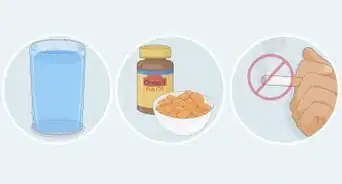
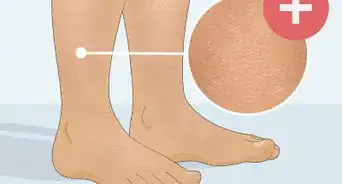 The Best Ways to Heal Flaky Legs In & Out of the Shower
The Best Ways to Heal Flaky Legs In & Out of the Shower

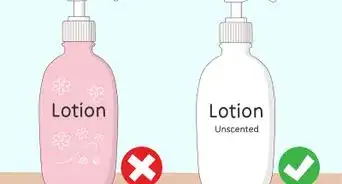
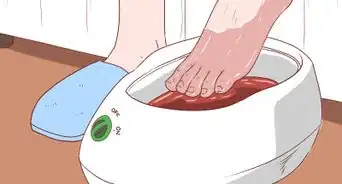


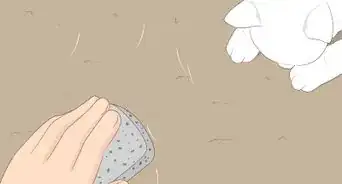 Pumice Stone Uses: Tips, Tricks, & Techniques
Pumice Stone Uses: Tips, Tricks, & Techniques
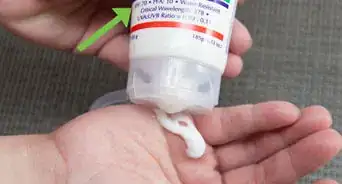
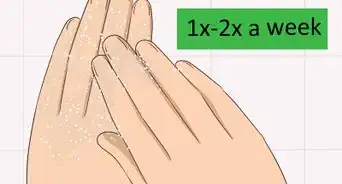

References
- ↑ http://www.footsmart.com/health-resource-center/foot/dry-skin
- ↑ http://wellnessmama.com/7004/magnesium-foot-scrub/
- ↑ http://www.footsmart.com/health-resource-center/foot/dry-skin
- ↑ http://www.footsmart.com/health-resource-center/foot/dry-skin
- ↑ http://www.healthywomen.org/content/article/8-ways-treat-your-feet-right
- ↑ http://www.bustle.com/articles/54145-how-do-you-cure-dry-feet-a-guide-to-using-pedicures-moisturizer-and-an-amope-to
- ↑ http://www.healthywomen.org/content/article/8-ways-treat-your-feet-right
- ↑ http://www.healthywomen.org/content/article/8-ways-treat-your-feet-right
- ↑ http://www.healthywomen.org/content/article/8-ways-treat-your-feet-right
About This Article

To heal dry skin on your feet naturally, remove dead skin with a pumice stone after bathing, and moisturize with olive oil or coconut oil before bed. Remember to bathe regularly and wear comfortable shoes that support your feet. If natural remedies don’t work for you, an over-the-counter heel balm may help. For treating illnesses like athlete’s foot or eczema, see your doctor for a medicated foot cream. To learn how to make your own foot soak at home, read on!
